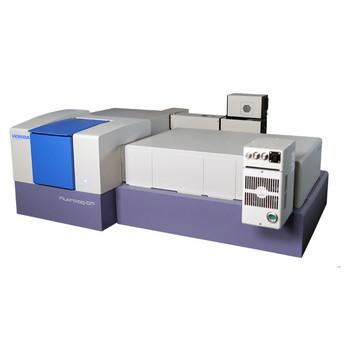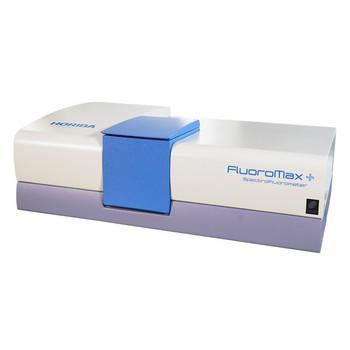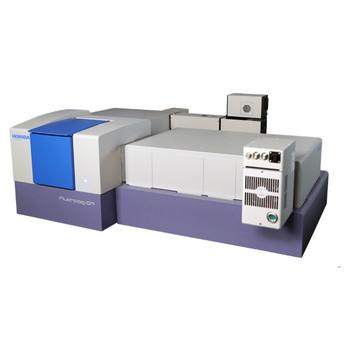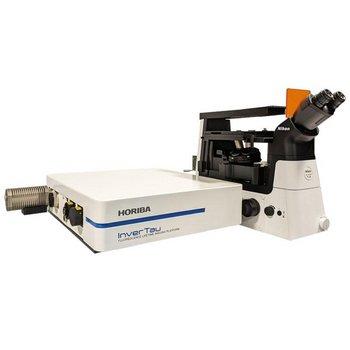A fluorometer (and fluorimeter) measures the fluorescence or light emitted by different fluorescing objects. Fluorescence occurs when light of specific wavelength hits and excites electrons in a sample, and the electrons in that sample instantly emit or fluoresce light of a different wavelength. All fluorescent objects have its own fingerprint, meaning that it excites and emits predictable types of light.
Fluorescent samples produce an emission spectrum that is measured through a monochromator connected to a photomultiplier detector similar to spectrophotometer.
After exciting a sample, a Fluorometer allow us to obtain and measure various attributes of that sample’s fluorescence, including its intensity, spectral wavelengths and lifetime. The fluorescence of a sample can be an indirect probe of the sample's environment, describing the solvent-solute interactions, inter- and intramolecular interactions, and so on. Fluorescence can be used for both qualitative and quantitative analysis of samples.
Analytical measurements provided by Fluorescence Spectroscopy Instrumentation are used in multiple applications including chemistry, biochemistry, medical research, pharmaceuticals, food science, environmental studies and nanotechnology. Fluorescence spectroscopy instruments have been used to examine counterfeit banknotes, materials for optoelectronics, and proteins.
Our Fluorometers can accommodate any size work-area, and are available as compact or benchtop models, or as large modular systems, to suit your requirements. In addition, our Fluorometers can be coupled to become modular Fluorometer systems, or supercontinuum white-light laser-powered lifetime Fluorometers!
HORIBA’s Fluorometers offer incredibly fast lifetime determinations down to picoseconds, deep UV absorbance and fluorescence excitation from as short as 200 nm in the UV, all the way to near-IR wavelengths of 1000 nm.
See below for our range of Fluorometers, Components and Accessories:





















